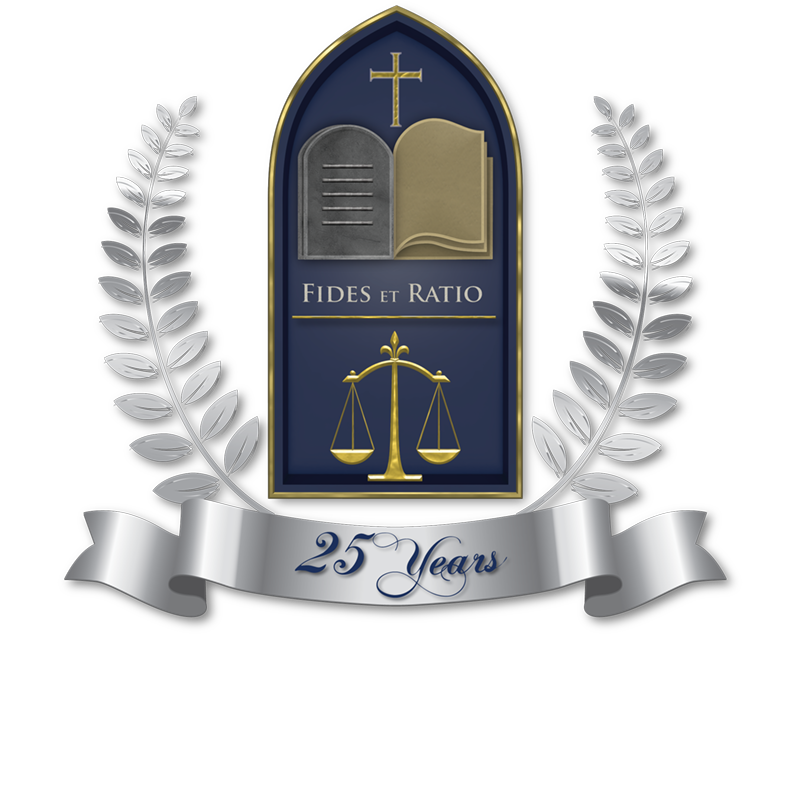Unveiling the Tools of Judicial Interpretation:
A Perspective from the Veterans Memorial Law Library

By Ulysses Jaen
Director and
Assistant Professor of Law
Veterans Memorial Law Library
Ave Maria School of Law
As the Director of the Veterans Memorial Law Library, I am often reminded of the pivotal role our institution plays in equipping future lawyers with the knowledge and skills necessary to navigate the complexities of the legal system. One of the most critical aspects of legal education is understanding the various doctrines, canons, and interpretive tools that judges use to interpret and apply the law. These principles are not merely academic abstractions; they are the foundation of judicial decision-making in the United States, and a good understanding of them is essential for anyone aspiring to practice law.
The Importance of Legal Doctrines
Legal doctrines serve as the bedrock of judicial analysis, offering frameworks or tests established through precedent that guide judicial decision-making in specific areas of law. Consider the doctrine of “stare decisis”, which holds that courts should adhere to precedent when deciding similar cases. This principle is fundamental to ensuring consistency and predictability in the law. When courts follow precedent, they uphold the stability of the legal system, providing a reliable guide for lawyers and their clients.
Another significant doctrine is the “faithless servant doctrine”, which mandates that an employee who acts disloyally must forfeit any compensation received during the period of disloyalty. This doctrine underscores the fiduciary duties employees owe to their employers and acts as a crucial deterrent against disloyal behavior.
Equally important is the “substantial performance doctrine,” which maintains that a contract that was substantially performed before a breach may still be upheld. This doctrine prevents unjust enrichment and ensures that parties are not unduly penalized for minor deviations from contract terms.
Furthermore, the doctrine of “laches” allows courts to refuse to hear cases not brought within a reasonable time, thus encouraging the timely resolution of disputes and preserving the integrity of evidence.
The Role of Canons of Construction
In addition to legal doctrines, judges rely on canons of construction to interpret statutory and constitutional text. These canons fall into two main categories: linguistic and substantive.
“Linguistic canons” help clarify the meaning of words and phrases within the legal text. For instance, the “plain meaning rule” dictates that words should be given their ordinary, contemporary meaning unless the context indicates otherwise. This rule respects the straightforward meaning of the text and avoids judicial overreach.
The “noscitur a sociis” canon suggests that words are known by the company they keep, helping to interpret ambiguous terms by considering the surrounding context. Similarly, the principle of “expressio unius est exclusio alterius” implies that the expression of one thing excludes others, thereby guiding the interpretation of legislative intent.
“Substantive canons” guide judges in ensuring that their interpretations align with broader legal principles. The “constitutional avoidance canon” advises courts to interpret statutes in a way that avoids constitutional issues whenever possible, thus preserving the constitutionality of laws. The “rule of lenity” resolves ambiguities in criminal statutes in favor of the defendant, ensuring that individuals are not punished under unclear or vague laws. Additionally, the “presumption against implied repeals” maintains legislative consistency by presuming that a new statute does not repeal an existing one unless explicitly stated.
Legislative History and Other Interpretive Tools
The use of legislative history in statutory interpretation has been a subject of debate. Proponents argue that it can illuminate legislative intent, while critics contend that it is unreliable and undemocratic. Regardless of the controversy, sources such as committee reports, floor debates, hearing transcripts, and earlier versions of bills provide valuable insights into the legislative process. Our library provides access to legislative histories through HeinOnline as well as the United States Code Congressional and Administrative News (USCCAN), which is published by Westlaw and contains specific collections of congressional and administrative materials from 1948 to the present and other legal databases.
Judges also employ various other interpretive tools, including dictionaries, “words and phrases,” and thesauruses to determine the ordinary meaning of words, The Federalist Papers and ratification debates for constitutional interpretation, and agency interpretations under doctrines like Chevron deference, which recognizes the expertise of administrative agencies. Additionally, policy considerations often influence judicial decisions, ensuring that legal interpretations lead to fair and reasonable outcomes.
Conclusion: Embracing the Rich Toolkit of Judicial Interpretation
At Ave Maria School of Law, we are committed to fostering a deep understanding of these essential legal doctrines, canons, and interpretive tools. As methods of interpretation continue to evolve, it is imperative for lawyers and scholars to appreciate both the utility and limitations of different interpretive approaches. By employing these tools judiciously, courts strive to faithfully interpret and apply the law while adapting to new circumstances.
I invite you to explore the rich resources available at the Veterans Memorial Law Library, where you can delve deeper into these principles and enhance your legal expertise. Our extensive collections and knowledgeable staff are here to support your journey in understanding U.S. jurisprudence.
By embracing these interpretive tools, we uphold the integrity of the legal system and ensure that justice is served in a consistent, predictable, and fair manner. Let us continue to engage in dynamic debates about interpretive methodology, advancing our collective understanding and application of the law.
Sources:
[PDF] section iii. canons of judicial conduct for – Virginia’s Judicial System https://www.vacourts.gov/courts/scv/canons_of_judicial_conduct.pdf
Canons of Construction: What is Their Role, if Any, in Modern … https://www.americanbar.org/groups/judicial/publications/appellate_issues/2022/winter/canons-of-construction/
Statutory Interpretation: General Principles and Recent Trends https://www.everycrsreport.com/reports/97-589.html
[PDF] What is Legal Doctrine https://law.bepress.com/cgi/viewcontent.cgi?article=1003&context=nwwps-plltp
Federal Legislative History | Duke University School of Law https://law.duke.edu/lib/research-guides/federal-legislative-history
[PDF] Statutory Interpretation: Theories, Tools, and Trends – CRS Reports https://crsreports.congress.gov/product/pdf/R/R45153/2
Common Law Doctrines | Constitution Annotated | Library of Congress https://constitution.congress.gov/browse/essay/intro.4-3-6/ALDE_00000016/
[PDF] Making the Case for Judicial Tools – National Center for State Courts https://www.ncsc.org/__data/assets/pdf_file/0023/17663/judicial-tools-1-0-final.pdf
Federal Legislative History Research Guide: Start Here https://lawlib.lclark.edu/leghistory
Code of Conduct for United States Judges https://www.uscourts.gov/judges-judgeships/code-conduct-united-states-judges
Getting Started & Key Resources – Legislative History Research Guide https://guides.ll.georgetown.edu/legislative_history
[PDF] Federal Legislative History https://law.nd.edu/assets/324601/federal_legislative_history_2019.pdf
Legislative History – Legal Research Fundamentals – LibGuides https://law.upenn.libguides.com/researchfundamentals/legislativehistory
[PDF] The Doctrine of Precedent in the United States of America https://scholarworks.law.ubalt.edu/cgi/viewcontent.cgi?article=2154&context=all_fac
Canons of Statutory Construction – United States Federal Law https://libguides.uakron.edu/federallaw/canons
Legal doctrine – Wikipedia https://en.wikipedia.org/wiki/Legal_doctrine
[PDF] How Federal Judges Use Legislative History; Essay https://scholarship.law.nd.edu/cgi/viewcontent.cgi?article=1196&context=jleg
Federal Legislative History – Legal Methods https://libguides.law.widener.edu/legalmethodsbasiclegalresearch/federal-legislative-history
[PDF] CANONS OF CONSTRUCTION (adapted from Scalia & Garner) https://www.law.uh.edu/faculty/adjunct/dstevenson/2018Spring/CANONS%20OF%20CONSTRUCTION.pdf




